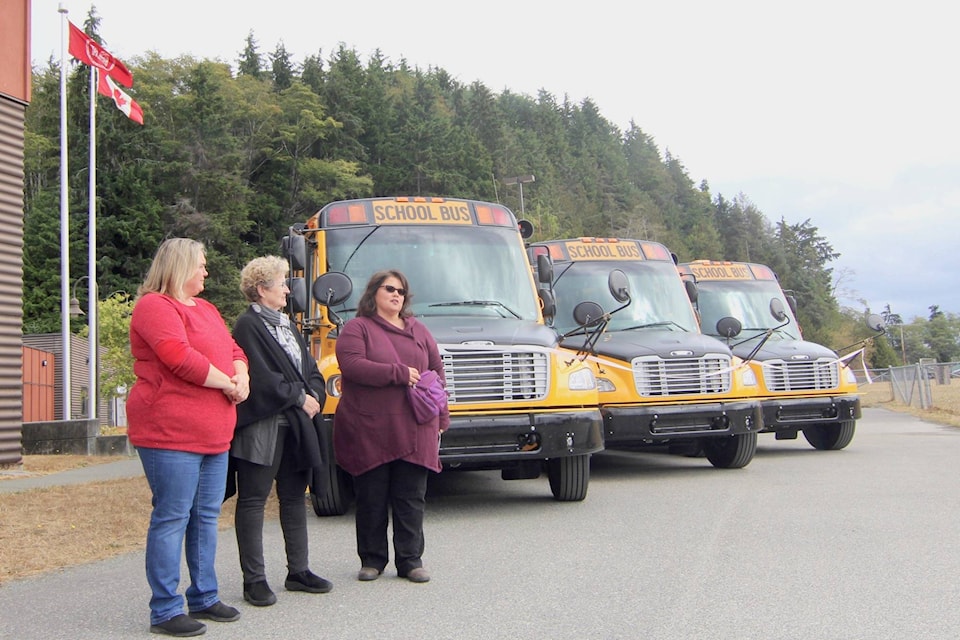The wheels on Haida Gwaii’s new school buses go round and round, but their red-light cameras go click, click, click.
Among the safety features on the school district’s fleet of four brand-new buses are exterior video cameras that will record any cars or trucks which fail to stop when kids are getting on or off.
“Basically, if any car blows by while the stop sign is out, it takes a picture,” says Ron Erickson, a salesperson with First Truck Centre, which delivered the new buses last week.
Once it goes to the RCMP, that picture will be worth a $368 fine and three demerit points to the driver.
Besides the external cameras, the new buses feature larger windshields and front-mounted guard arms to keep students in the driver’s view. They also come with GPS tracking, power mirrors, a bright light above the boarding steps, disc brakes, and comfy air-ride seats for the drivers.
Parent councils need to give them a final okay, but the new buses also have interior video cameras in case there is trouble on board.
Speaking at a launch ceremony outside GidG̱alang Ḵuuyas Naay last Friday, Maintenance Supervisor Lao Peerless noted that all four buses cost a total of $460,000 — a significant share of B.C.’s $10 million school bus budget.
“That is almost unheard of, to get that many buses for the population of students that we have,” Peerless said.
“The ministry really came through for us.”
Running its own bus fleet is a big change for the school district, one that could eventually save around $200,000 a year and make field trips far more affordable.
Previously, the district had a bussing contract with FirstStudent Canada that was set to reach $605,000 a year. Field trips were costing about $800 or $900 on average, but should now fall to about half that.
Peerless said the school district won’t see savings in the first year — while the three 76-passenger and one 24-passenger school buses came at no cost, the district also had to buy a spare bus and a tsunami-ready bus, plus spare parts and fleet cars for the drivers.
One bus will stay parked near Gudangaay Tlaats’gaa Naay Secondary and another near Tahayghen Elementary in Masset in case of a tsunami evacuation. The shorter 24-seat bus will carry Sandspit students to GidG̱alang Ḵuuyas Naay from the ferry terminal, but may also be handy for field trips to more out-of-the-way places, such as Gray Bay.
Before blessing the new buses in Haida language, School Trustee Kim Goetzinger said the board worked hard to find a way out of what was becoming an unaffordable bussing contract.
Goetzinger also thanked the district’s bus drivers for taking such care of the islands’ children.
“There have been a lot of things in your path: mudslides, earthquakes, tsunami warnings, sheer black ice, cows, there’s just always something — deer,” she said.
“We take that for granted sometimes.”
andrew.hudson@haidagwaiiobserver.com
Like us on Facebook and follow us on Twitter
